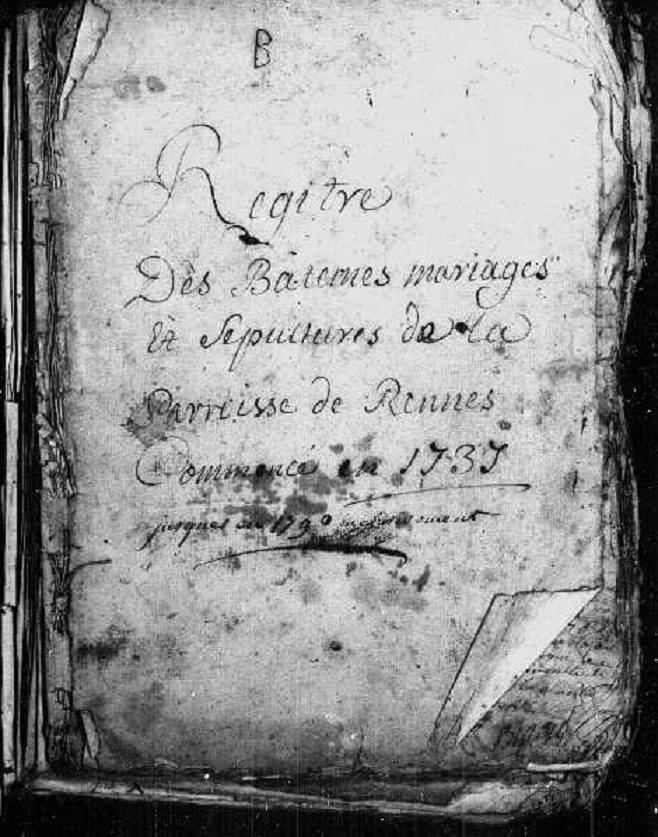The lost record (January 1726 - May 1737): Saunière's "parchments"?

As Patrick Mensior tells us, in an inventory made in 1845 by the commune of Rennes-le-Château, in which the Parish Records from 1694 to 1726 and those from 1737 to 1789 appear, we see that the one from January 1726 to May 1737 is not found. And it is precisely during the period covered by that lost record (1726-1737), that the Tomb of the Lords of Rennes was probably closed. The end of the record also coincides with the arrival in Rennes-le-Château in 1736 of l'abbé Jean Bigou. (His brother Antoine would take over in the parish in 1776. Before them, we find l'abbé Vernat, who appears on the death certificate of the "dame Anne Dalsol" 1705).
It also happens that between 1725 and 1739 (period covered by the aforementioned register) the church of Rennes-le-Château was administered by two Capuchin friars: Frère Dominique de Pamiers and Frère Michel-Ange de Rodez (Vicaire Régent de Rennes in 1726). We cannot therefore rule out the possibility that one of them took the initiative to close the tomb between those years. But it could also be Vernat himself, after the burial of Mr. Henry du Vernet in 1724, or Jean Bigou himself. Thus, since the burial of the "Noble lord Henry du Vernet, lieutenant-colonel de cavalerie...enterré dans l'église du lieu au tombeau des seigneurs...signé Vernat curé", in 1724, there is no further burial inside the enclosure. The next burial is that of Barthelemi Tisseyre in 1737, this time in the cemetery of Rennes.... (although Barthelemi is not a nobleman). What is clear is that the next nobleman to be buried is Joseph, the son of the Marquise, on March 8, 1739, this time in the cemetery of Rennes-le-Château, "dans le cimetière de la paroisse tout près de la grande croix", not in the Tomb of the Lords, which was already closed.....
It seems, therefore, that the Tomb of the Lords was closed at that time, between 1724 and 1739.....Hence the importance of that lost record. From these facts, a series of questions arise...:
Why is the parish register from 1727 to 1736 lost? What is its importance? Is the access to the Tomb of the Lords of Rennes revealed in it? Did Abbé Vernat hide it? Or one of the Capuchin friars? Or maybe abbé Jean Bigou? For what purpose? So that the entrance to the Tomb of the Lords of Rennes was never found once closed? Was that parish record from 1727 to 1736 actually the famous "parchments" found by Bérenger Saunière in the church of Rennes-le-Château? Did that find allow abbé Saunière to find access and enter the Tomb of the Lords of Rennes? Who currently has that record?
Translated from HERE